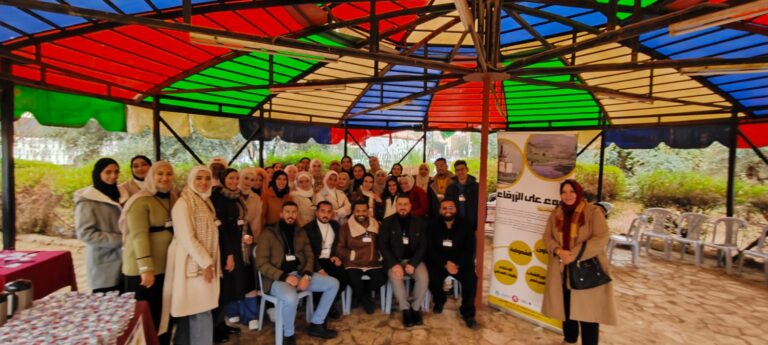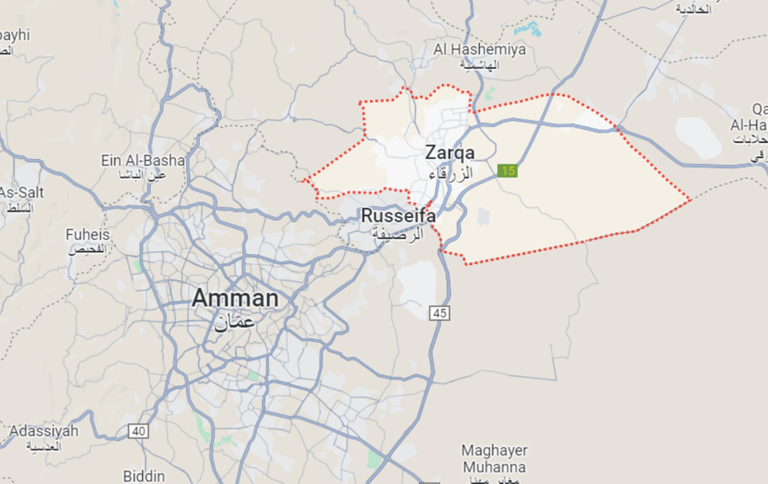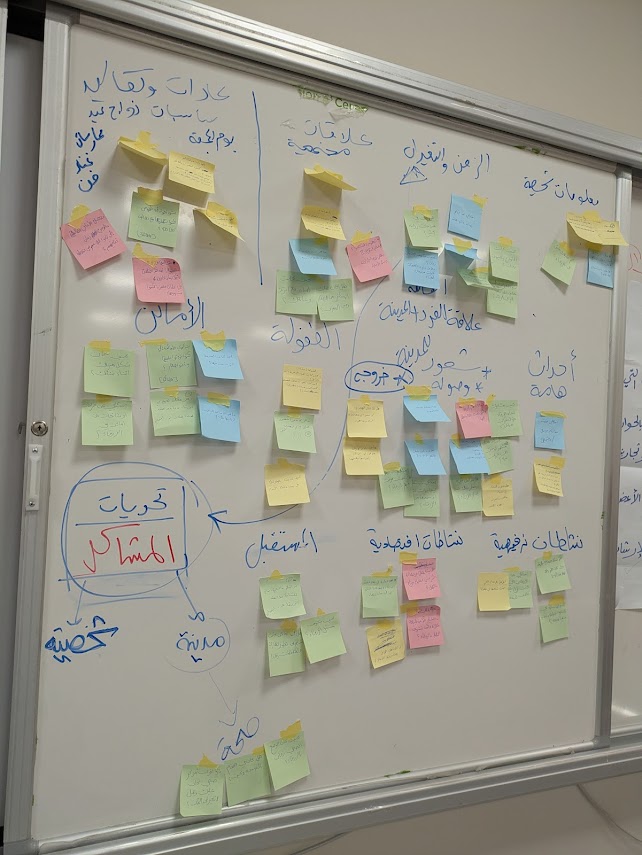Youth, Lego Towers, and Big Dreams in Zarqa
Hala Ghanem
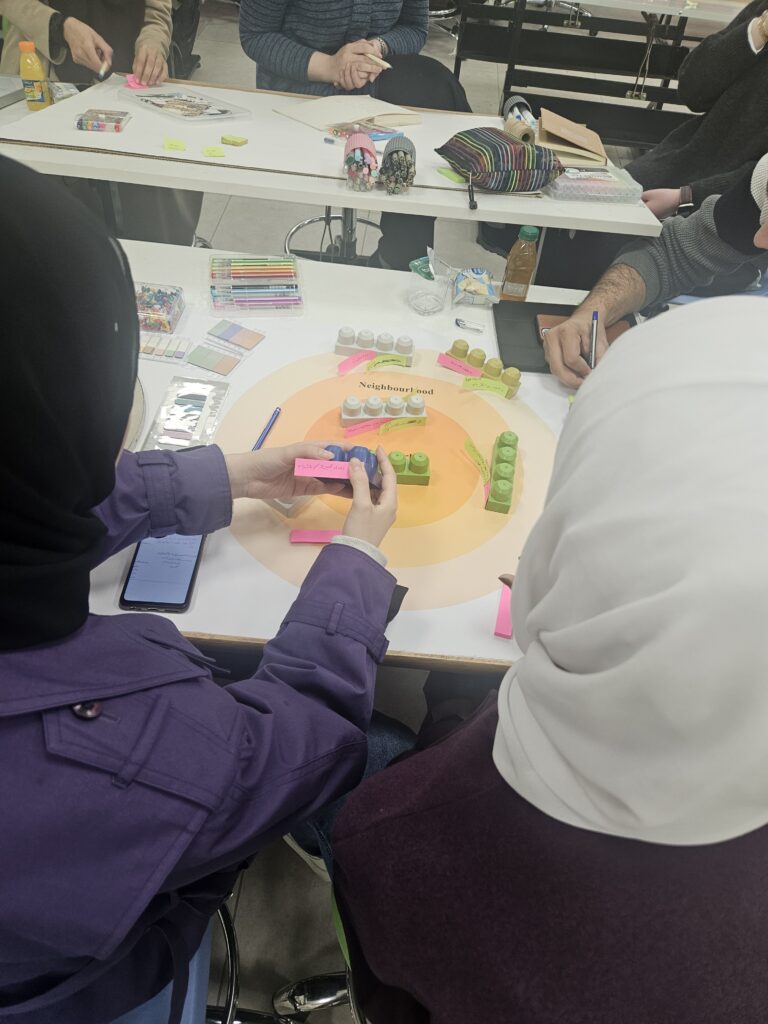
The room was buzzing from the moment we started. Fifth-year architecture students from Hashemite University sat side by side with our youth researchers, piles of Lego bricks and sticky notes on the tables. The task sounded straightforward: decide what makes a good public space in Zarqa and imagine what it might look like. In reality, it became something much more.
Each group came up with its own playful method. One team stacked Lego towers to show which ideas mattered most, another turned a target board into a visual game, while others used sticky notes and vision boards bursting with colour. The room buzzed with debate: should safety trump accessibility? Is a site near cultural landmarks more important than one near food outlets? The answers were not straightforward, but the variety of methods meant everyone had a chance to make their perspective visible, whether through bricks, boards, or words.
For us in the research team, it was inspiring to see the mingling of worlds. The room was full of energy and creativity, and the youth researchers were talking about Zarqa with a confidence that felt new and refreshing. Watching them take ownership of how their city could be imagined was as valuable as the proposed designs themselves.
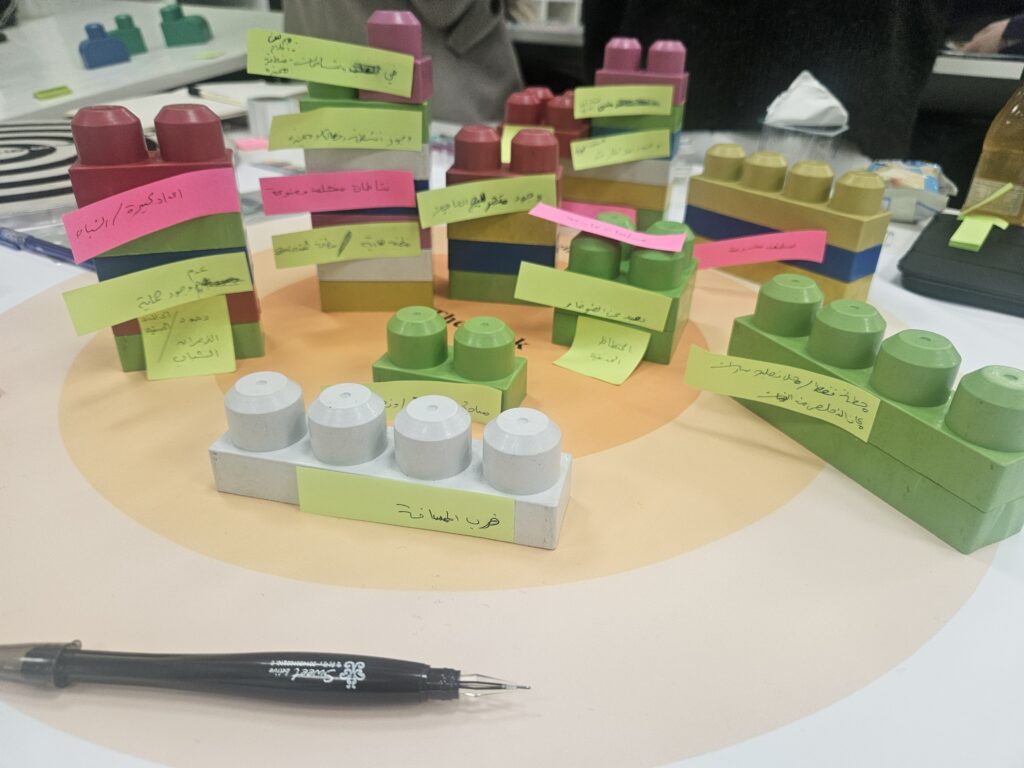
One youth researcher said afterward: “I gave them insights about Zarqa, and they gave me ideas about spatial design and youth spaces that I had never thought of before. It was an exchange of knowledge as much as it was about planning a space.”
Out of these playful exercises came real substance. Safety, accessibility, and cleanliness mattered, but so did vibrancy, memory, and inclusivity. The youth were clear: they wanted spaces where they felt welcome, where they could breathe, and where new memories could be made.
The designs that followed were full of imagination. Students and youth envisioned spaces that could shift and change: a film night on Thursday, a pop-up bazaar on Friday, a quiet study zone on Weekdays. They pictured basketball courts next to storytelling corners, Wi-Fi spots alongside Taleeleh spaces for gatherings.
One student reflected, “We did not just design a youth space. We learned from each other and from Zarqa’s youth about what really matters when creating places that reflect their needs and experiences.”
By the end, the room was covered in drawings, collages, and notes. But more importantly, it was filled with a sense of ownership. The youth were not just participants; they were shaping how their city could be imagined. The process did not stop there. Students took their recommendations to UN Habitat and other local partners and Sanabel Landscape Architects picked up the baton to start turning these youth-driven visions into something real.
What stayed with me most was not the drawings, but the conversations. When you mix Lego bricks with local wisdom, you get more than designs. You get young people imagining their city differently, and that is where change begins.
